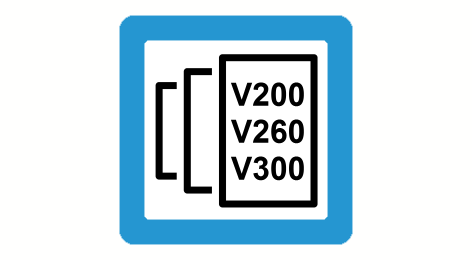Crosstalk compensation
Crosstalk compensation is used to compensate for position errors caused by an acceleration in another axis.
Release Note

Functionality available as of CNC Build V3.1.3081.2 or V3.1.3108.4.
Compensation process
Crosstalk compensation is used to compensate an axis position depending on the acceleration of another axis.
The axis whose acceleration affects the compensation value is called the master axis. The axis for which compensation is active is called the slave axis.
A master axis can also be the salve axis of another master axis.
The axis whose position affects the compensation value is called the adaptation axis. Up to two adaptation axes can be specified.
Compensation can be configured direction-dependent.
Notice

The data for crosstalk compensation is specified in the compensation value list of the slave axis.

Properties
- A master axis has one or several slave axes.
- A slave has only one master axis.
- Crosstalk compensation can also be used for the master and slave axes of a gantry combination.
- A compensation value can be specified for each acceleration.
- Interpolation between accelerations is linear.
- Crosstalk compensation is available for all drive types.
- Compensations can only be viewed in the accelerations directly output to the drive (not in the normal display data) since compensation takes place outside normal calculations.
Effectiveness
Crosstalk compensation is only effective if all the following conditions are fulfilled:
- The function was activated for the slave axis.
- The compensation value list was provided.
- Master and slave axes include linear axes, rotary axes or spindles.